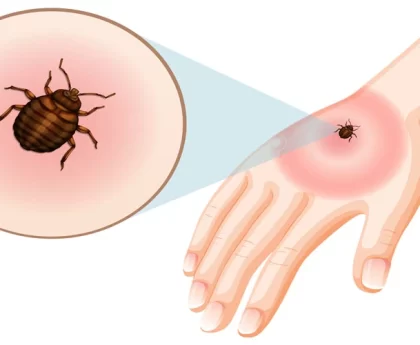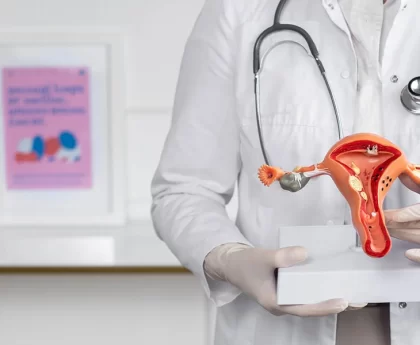Headaches can be caused by a variety of factors, including stress, tension, dehydration, eye strain, sinus issues, caffeine withdrawal, certain medications, and other underlying health conditions. There are several types of headaches, each with distinct characteristics and causes.
Here are some common types of headaches:
1. Tension Headaches: These are the most prevalent type of headaches. They typically cause mild to moderate pain and a feeling of tightness or pressure around the head, forehead, or back of the neck. Tension headaches are often triggered by stress, poor posture, lack of sleep, or eye strain.
Tension Headaches Symptoms:
- Dull, aching pain usually on both sides of the head.
- Feeling of pressure or tightness around the forehead or back of the head.
- Mild to moderate intensity.
- No associated nausea or vomiting.
- May have sensitivity to light or sound, but not usually severe.
2. Migraine Headaches: Migraines are more severe and usually involve pulsating or throbbing pain on one side of the head. They can be accompanied by other symptoms like nausea, vomiting, sensitivity to light and sound, and visual disturbances (aura). Migraines can last from a few hours to several days and are often triggered by various factors such as hormonal changes, certain foods, stress, or environmental factors.
Migraine Headaches Symptoms:
- Intense, throbbing or pulsating pain, often on one side of the head.
- Nausea and/or vomiting.
- Sensitivity to light (photophobia), sound (phonophobia), or smells.
- Visual disturbances (aura) like flashing lights, blind spots, or zigzag lines (not always present).
- Some people may experience prodrome (early warning signs) and postdrome (after-effects) phases.
3. Cluster Headaches: Cluster headaches are less common but extremely intense and occur in clusters or groups, typically over weeks or months. They cause severe, stabbing pain on one side of the head, usually around the eye or temple. Cluster headaches often come with additional symptoms like red or teary eyes, stuffy nose, and restlessness.
Cluster Headaches Symptoms:
- Severe, excruciating pain, usually on one side of the head, around the eye or temple area.
- Attacks occur in clusters or groups, often at the same time of day or night.
- Additional symptoms may include red or teary eyes, stuffy nose, and restlessness.
- Attacks can last from 15 minutes to several hours and may occur multiple times per day.
4. Sinus Headaches: Sinus headaches are often mistaken for migraines or tension headaches. They result from sinus inflammation and are usually accompanied by a stuffy or runny nose and facial pressure or pain.
Sinus Headaches Symptoms:
- Deep, constant pain in the forehead, cheekbones, or bridge of the nose.
- Accompanied by nasal congestion or discharge.
- Pain worsens with sudden movements of the head.
5. Hormonal Headaches: These headaches are linked to hormonal changes, especially in women. They may occur during menstruation, pregnancy, or menopause due to fluctuations in estrogen levels.
Hormonal Headaches Symptoms:
- Usually associated with hormonal fluctuations during menstruation, pregnancy, or menopause.
- Similar symptoms to tension headaches or migraines, but with a predictable pattern related to hormonal changes.
6. Caffeine Withdrawal Headaches: People who consume large amounts of caffeine and suddenly reduce or stop their intake may experience withdrawal headaches.
Caffeine Withdrawal Headaches Symptoms:
- Occur after a sudden reduction or cessation of caffeine intake.
- Can be throbbing or dull in nature.
- Often accompanied by fatigue and irritability.
7. Rebound Headaches: Also known as medication-overuse headaches, these occur when pain relievers are taken frequently for headaches. Over time, the medications can actually worsen the headaches.
Rebound Headaches Symptoms:
- Frequent and persistent headaches caused by overuse of pain relievers.
- Pain may vary in intensity and duration.
8. Exertional Headaches: These headaches are triggered by physical activity or exertion and are more common in individuals who engage in strenuous exercises.
Exertional Headaches Symptoms:
- Triggered by physical activity or strenuous exercise.
- Pain usually throbbing and on both sides of the head.
It’s important to note that some individuals may experience a combination of headache types or have chronic headaches that fall under multiple categories. If you are experiencing severe, recurrent, or unusual headaches, it’s essential to seek medical advice for a proper evaluation and diagnosis
Here are some common causes of headaches:
- Stress and Tension: Emotional stress, anxiety, and mental strain can lead to tension headaches, which are the most common type of headaches.
- Muscle Tension: Poor posture, neck or shoulder tension, and clenching of the jaw can cause muscle tension headaches.
- Dehydration: Not drinking enough water can lead to dehydration, which is a common trigger for headaches.
- Eye Strain: Prolonged use of digital devices, reading, or other activities that strain the eyes can cause headaches, especially in individuals who need corrective lenses but are not wearing them.
- Sleep Issues: Both lack of sleep and excessive sleep can trigger headaches in some individuals.
- Hormonal Changes: Fluctuations in estrogen levels, especially in women, can lead to hormonal headaches, often associated with menstruation, pregnancy, or menopause.
- Foods and Beverages: Certain foods and drinks can act as headache triggers, including alcohol, caffeine, processed foods, aged cheeses, and foods containing additives like MSG.
- Skipping Meals: Fasting or skipping meals can lead to low blood sugar, which can trigger headaches in some people.
- Environmental Factors: Changes in weather, high humidity, bright lights, strong smells, and exposure to environmental pollutants can be headache triggers.
- Medication Overuse: Frequent use of pain relievers, especially opioids and combination pain medications, can lead to rebound headaches.
- Sinus Issues: Inflammation of the sinuses due to allergies or infections can cause sinus headaches.
- Migraine Triggers: Migraines can be triggered by a wide range of factors, including certain foods, hormonal changes, stress, sensory stimuli (e.g., bright lights, loud noises), changes in sleep patterns, and weather changes.
- Physical Exertion: Intense physical activity or exercise can trigger exertional headaches in some individuals.
- Underlying Health Conditions: Headaches can be a symptom of various underlying health conditions, including head injuries, infections, high blood pressure, brain tumors, and other neurological disorders.
- Genetics: Family history can play a role in predisposition to certain types of headaches, such as migraines.
It’s important to note that individual triggers can vary significantly, and what causes headaches in one person may not affect another. Identifying the specific triggers for your headaches can be helpful in managing and preventing them. If you experience frequent or severe headaches, it’s essential to consult a healthcare professional for a proper evaluation and personalized treatment plan.
The treatment for headaches depends on the type, severity, and underlying cause.
Here are some common headache treatments:
- Over-the-Counter Pain Relievers: For mild to moderate headaches, over-the-counter pain relievers such as acetaminophen (Tylenol), ibuprofen (Advil, Motrin), or naproxen (Aleve) can be effective. Always follow the recommended dosages and precautions.
- Prescription Medications: If over-the-counter medications are not effective or if you suffer from migraines or cluster headaches, your doctor may prescribe specific medications like triptans, ergots, or other abortive or preventive medications.
- Lifestyle Changes: Making lifestyle adjustments can help manage and prevent certain types of headaches. This may include getting regular sleep, maintaining a consistent sleep schedule, managing stress through relaxation techniques, and staying hydrated.
- Identifying and Avoiding Triggers: If you can identify specific triggers for your headaches, such as certain foods or environmental factors, avoiding them may help reduce the frequency and intensity of headaches.
- Biofeedback: Biofeedback is a technique that helps you gain control over certain bodily functions, including muscle tension and heart rate. It can be beneficial for tension headaches and migraines.
- Physical Therapy: For tension headaches caused by muscle tension or poor posture, physical therapy can be useful in relieving pain and improving posture.
- Acupuncture: Acupuncture, an ancient Chinese therapy involving the insertion of thin needles into specific points on the body, has been reported to provide relief for some individuals with headaches.
- Hot or Cold Compress: Applying a hot or cold compress to the forehead or neck can help soothe headaches for some people.
- Avoiding Medication Overuse: If you frequently use pain relievers for headaches, you may develop medication overuse headaches. In such cases, your doctor may advise you to limit or stop the use of pain medications.
- Prescription Preventive Medications: For individuals with chronic migraines or cluster headaches, doctors may prescribe preventive medications to reduce the frequency and severity of headaches.
- Managing Hormonal Changes: For hormone-related headaches, such as menstrual migraines, hormone therapy or birth control may be recommended.
- Relaxation Techniques: Practicing relaxation techniques like deep breathing, meditation, or yoga can help manage stress and tension, which are common triggers for headaches.
Always consult with a healthcare professional for a proper evaluation and personalized treatment plan. If you experience severe, persistent, or sudden-onset headaches, especially with other concerning symptoms, seek immediate medical attention.
When to worry about Headache Pain?
While most headaches are generally harmless and can be managed with simple measures, there are certain signs and symptoms that should prompt you to seek immediate medical attention.
Here are some warning signs to be aware of:
- Sudden and Severe Headache: If you experience an abrupt and intense headache, often described as the worst headache of your life, it could be a sign of a medical emergency.
- Headache After a Head Injury: If you hit your head and subsequently develop a headache, especially if accompanied by other symptoms like dizziness, confusion, or loss of consciousness, seek medical attention immediately.
- Headache with Neurological Symptoms: Neurological symptoms, such as weakness, numbness, difficulty speaking, changes in vision, or confusion, along with a headache can be concerning and require prompt evaluation.
- Headache with Fever: Headaches accompanied by fever and other signs of infection, such as a stiff neck, could be indicative of meningitis or another serious condition.
- New-Onset Headache in Older Adults: If you are over 50 years old and experience a new headache, especially if it’s the first significant headache of your life, it’s essential to get evaluated by a healthcare professional.
- Changes in Headache Pattern: If you notice a sudden and significant change in the frequency, severity, or characteristics of your headaches, it may warrant medical investigation.
- Headache After Physical Exertion: If a headache is triggered by physical activity or exercise, it’s important to get it evaluated to rule out potentially serious causes.
- Headache with Altered Consciousness: If you experience a headache along with altered consciousness, confusion, or difficulty staying awake, seek medical attention promptly.
- Headache with Nausea and Vomiting: Severe headache accompanied by persistent nausea and vomiting could be a sign of various underlying conditions, including migraines or increased intracranial pressure.
- Headache in a Cancer Patient: If you have a history of cancer and develop new or worsening headaches, it’s crucial to inform your healthcare provider as it may require further evaluation.
Remember that headaches can be caused by various factors, and not all headaches are emergencies. However, if you experience any of the above warning signs or have concerns about your headaches, it’s essential to seek immediate medical evaluation to determine the cause and receive appropriate treatment. It’s always better to err on the side of caution when it comes to your health.
What to do while Headache Pain?
When you’re experiencing headache pain, there are several steps you can take to alleviate discomfort and promote relief. Here are some suggestions to try:
- Rest in a Quiet and Darkened Room: Find a comfortable and quiet place to rest, away from bright lights and loud noises.
- Stay Hydrated: Make sure to drink plenty of water, as dehydration can contribute to headaches.
- Apply a Cold or Warm Compress: Place a cold or warm compress on your forehead or the back of your neck to help ease headache pain. Some people find cold compresses more effective for migraines, while warm compresses may be soothing for tension headaches.
- Over-the-Counter Pain Relievers: Consider taking an over-the-counter pain reliever, such as acetaminophen (Tylenol), ibuprofen (Advil, Motrin), or naproxen (Aleve). Always follow the recommended dosages and precautions.
- Relaxation Techniques: Practice relaxation techniques such as deep breathing, meditation, or progressive muscle relaxation to reduce stress and tension, which can contribute to headaches.
- Massage: Gentle massage of the neck, shoulders, and temples can help relieve tension headaches.
- Avoid Triggers: If you know certain triggers that cause your headaches, try to avoid them. Common triggers include certain foods, caffeine, alcohol, stress, lack of sleep, and bright lights.
- Use Peppermint or Lavender Oil: Some people find relief from headache pain by inhaling peppermint or lavender essential oils or applying them topically (diluted with a carrier oil) to the temples.
- Acupressure: Applying gentle pressure to specific points on the body, such as the space between the thumb and index finger, may provide relief for some people.
- Keep a Headache Diary: If you experience frequent headaches, keeping a headache diary can help you identify patterns and potential triggers.
- Consider Caffeine: In some cases, a small amount of caffeine (e.g., a cup of coffee or tea) can help relieve headaches, especially if you regularly consume caffeine and are experiencing caffeine withdrawal.
- Avoid Screen Time: If your headache is related to eye strain, take breaks from screens (computers, phones, tablets) to rest your eyes.
- Try OTC Medications: Over-the-counter headache relief medications that contain a combination of pain relievers and caffeine may also be effective for some individuals.
It’s important to remember that not all remedies work for everyone, and individual responses to treatments can vary. If your headache pain is severe, persistent, or accompanied by other concerning symptoms, it’s crucial to consult a healthcare professional for proper evaluation and personalized advice.
Read This Article Also: The Magic of B12 Shots for Weight Loss: Benefits & Side Effects
If you don’t like this article/post please share your feedback.





